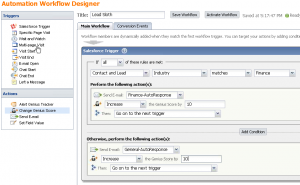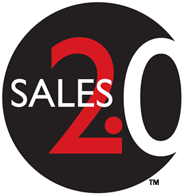Today Genius.com announced a free version of their Marketing Automation system. Only about a month ago, Loopfuse also started offering a free version of their Marketing Automation system. What does this mean for companies interested in adopting Marketing Automation?
How Much Is Free?
Let’s first look at the features of the free versions:
| Loopfuse | Genius.com | |
| Users | unlimited | 5 |
| Emails / month | 5,000 | 2,500 |
| Contacts | 2,500 | 3,000 |
| Pageviews / month | 100,000 | unlimited |
| Support | community-driven | community-driven |
So these offerings are closely matched. Both are meant as ‘freemium’ offerings. They are great for small companies and small initial projects, but they’re too limited for normal projects. Companies will have to upgrade to the paid version as their initiatives grow. And of course, that’s what Loopfuse and Genius.com hope for.
Why Free?
Why are they doing this? Loopfuse gives as the main reason that adoption rate of Marketing Automation is still very low (5-10%), and that a disruptive offering is needed to get the remaining 90-95% on board. This is supported by the main trends in the Marketing Automation market:
- The product scope of all marketing automation vendors is quite similar
- There is severe competition (30+ vendors)
- Land grab is common, where vendors lower prices to get customers on board
- Industry consolidation is starting (Market2lead acquired, LeadGenesys refocused)
My take: even though your project may be too large for these free versions, you may get a better deal for paid versions from whichever vendor. Just realize that this may not be a sustainable situation. Some vendors will sell below cost to gain market share, so higher prices or acquisitions may follow.
Will Other Vendors Follow?
Because the cost of offering a free version is low, other vendors may also want to create a free offering. But it’s not without its challenges. The key to success of a freemium model is to make the free version functional enough, while making premium version attractive enough so that a significant percentage of users will upgrade. Some of the other challenges:
- The gap between the free and paid versions may be too big
- ‘Free’ customers may lack the expertise to be successful
- There may be too much cost in the vendor’s business model (e.g. expensive sales teams)
Loopfuse has published pricing for their paid products, and they have a low-overhead sales model. Also, their founders came from Red Hat, which has a very similar strategy of offering both free and premium products. Few other vendors are in a similar position, so my prediction is that free versions are not going to be a trend.
So What Does It Mean For You?
If your company is looking to adopt Marketing Automation, count on paying for your Marketing Automation system. Either you will go over the limits of the free version, or you will require support. Instead of focusing on free or cheap, choose a vendor that you trust, that best meets your requirements, and that provides excellent support.
Does that mean that these free versions are irrelevant? No. It’s great to try out marketing automation without the limits of a trial period or for small projects. Also, it may be a good solution for small and savvy organizations. But the overall impact on the market will be limited. So I don’t think it’s going to be a general trend. What is your take? Please leave a comment with your prediction…

 Monday and Tuesday I’m attending the Boston
Monday and Tuesday I’m attending the Boston 
 “Sales 2.0 brings together customer-focused methodologies and productivity-enhancing technologies that transform selling from an art to a science. Sales 2.0 relies on a repeatable, collaborative and customer-enabled process that runs through the sales and marketing organization, resulting in improved productivity, predictable ROI and superior performance.” – Pelin Wood Thorogood and Gerhard Gschwandtner
“Sales 2.0 brings together customer-focused methodologies and productivity-enhancing technologies that transform selling from an art to a science. Sales 2.0 relies on a repeatable, collaborative and customer-enabled process that runs through the sales and marketing organization, resulting in improved productivity, predictable ROI and superior performance.” – Pelin Wood Thorogood and Gerhard Gschwandtner Genius.com
Genius.com  Loopfuse, a provider of open source marketing automation and email marketing solutions, has
Loopfuse, a provider of open source marketing automation and email marketing solutions, has